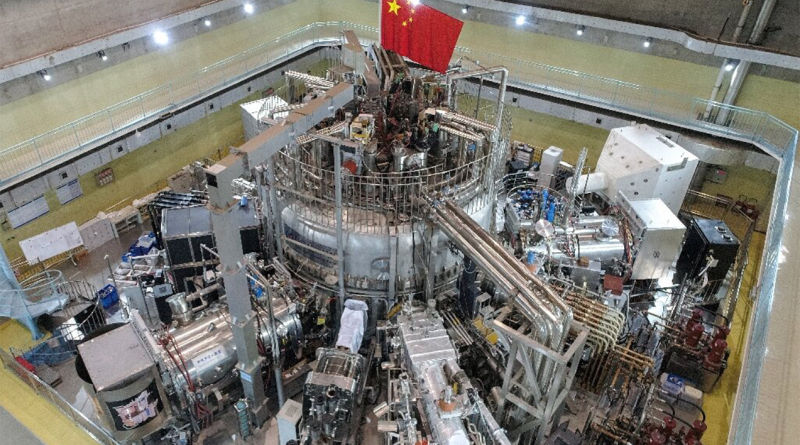Building a Fusion Empire as China Seeks Unlimited Energy
China is on a fast track to become the world leader in nuclear fusion, a pursuit that could revolutionize the global energy landscape. Unlike nuclear fission, which splits atoms to generate energy, nuclear fusion merges atomic nuclei, mimicking the process that powers stars, including our sun. This approach promises an abundant source of clean energy, devoid of carbon emissions and long-lived radioactive waste. However, creating the conditions for sustained nuclear fusion on Earth remains a monumental challenge.
Central to China’s strategy is the China Fusion Engineering Test Reactor (CFETR), an ambitious project aimed at proving the feasibility of fusion as a power source. The CFETR aims to achieve a net power output of 100 to 200 megawatts by the 2040s — a pivotal milestone that could place China ahead of its global competitors in the race to develop a commercial fusion reactor. The long-term goal is to reach a power output sufficient to meet large-scale electricity needs, fundamentally altering the world’s energy dynamics.
Building the Foundations — The Role of CRAFT
To realize these ambitions, China has established a robust infrastructure plan centered around the Comprehensive Research Facility for Fusion Technology (CRAFT) in Hefei, Anhui Province. CRAFT, sprawling over 40 hectares, is a key element of China’s fusion strategy. Designed to support the CFETR project, this facility will develop and manufacture essential materials, components, and prototype systems for the fusion reactors of the future.
Scheduled for completion by next year, CRAFT underscores China’s determination to move quickly and decisively in the fusion race. Unlike the fragmented efforts in some Western countries, where fusion research often grapples with inconsistent funding and shifting political priorities, China has poured both state resources and private investments into creating a cohesive, well-funded approach to fusion technology development. The facility itself is expected to be a major driver in refining the technological components necessary for a successful fusion reactor, such as superconducting magnets and advanced plasma diagnostics.
China’s rapid advancements in fusion research are bolstered by substantial government support and strategic investments. The Chinese government has made fusion energy a national priority, consolidating efforts through a consortium named China Fusion Energy, led by the China National Nuclear Corporation (CNNC). This initiative brings together 25 state-owned enterprises, four leading universities, and key private firms to pool resources, accelerate research, and scale up development.
In addition to this coordinated national effort, private sector involvement has grown significantly. China’s private fusion sector has attracted more than $500 million in investments, driven by a combination of government backing, private venture capital, and entrepreneurial interest. For instance, Energy Singularity, a Shanghai-based startup, has raised over $110 million to develop compact, efficient fusion reactors using advanced superconducting magnets. This growing synergy between public and private sectors is key to China’s competitive edge in the global fusion race.
Competing Against the Clock: China’s Timeline
While China’s nuclear fusion program is advancing rapidly, it faces intense competition from other global players. The CFETR project, with its goal of achieving a substantial net power output, is ahead of similar initiatives in Europe and Japan, which are not expected to begin their engineering designs until the late 2020s. Meanwhile, private fusion companies in the United States and other countries, such as Commonwealth Fusion Systems (CFS) and Tokamak Energy, are pursuing alternative fusion designs and materials that promise quicker commercialization.
China, however, is not solely focused on speed but also on building a sustainable and self-sufficient fusion ecosystem. The CFETR’s success depends not only on technological breakthroughs but also on solving critical supply chain challenges, such as developing a reliable supply of tritium — a rare isotope necessary for fusion reactions. Plans are already in place to explore tritium breeding technologies at China’s Burning Plasma Experimental Tokamak (BEST), scheduled for completion in 2027. This would be a significant step toward achieving energy self-sufficiency in fusion reactors.
China’s aggressive push toward nuclear fusion presents both opportunities and challenges. While its centralized approach and substantial investment provide a solid foundation for rapid advancements, significant scientific and technical hurdles remain. Achieving a sustained fusion reaction that produces more energy than it consumes requires overcoming daunting challenges, such as maintaining ultra-high temperatures and managing complex plasma behaviors.
Nevertheless, China’s strategy of combining government support, private investment, and a dedicated workforce offers a promising model for achieving fusion energy. With thousands of PhD students currently involved in fusion research and development, China is cultivating the next generation of scientists and engineers needed to make fusion a reality.
As the world watches, China’s fusion ambitions could reshape the global energy landscape, offering a glimpse into a future powered by virtually limitless and clean energy.
Sources:
